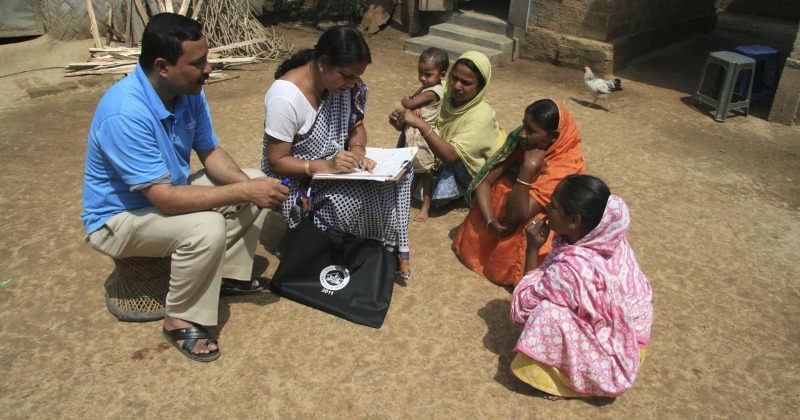The concept of caste has been a significant and contentious issue in Indian society, shaped over millennia by various historical, social, and political forces. While caste as understood today carries connotations of rigidity and hierarchy, its origins and purpose were far more fluid and dynamic. Rooted in the Vedic tradition of Sanatan Dharma, the original varna system was a flexible classification based on qualities and duties rather than birth. However, colonial interpretations, societal evolutions, and foreign invasions contributed to the distortion of this system. This article delves into the historical, religious, and political impacts of the caste system, particularly through the lens of the British-introduced caste census, and explores its lasting implications on Indian society.
Understanding the Four Internal Principles of Sanatan Dharma Sanatan Dharma, a foundational aspect of the Vedic tradition, highlights four main varnas—Brahmins, Kshatriyas, Vaishyas, and Shudras. These were not rigid social categories but roles dictated by one’s qualities (guna) and actions (karma). The original varna system, as outlined in the Vedas, aimed at ensuring spiritual growth and societal harmony, not enforcing social hierarchies based on birth. This understanding underscores the essential principles of Sanatan Dharma, which prioritized ethical living over rigid class distinctions.
Contrary to widespread misconceptions, the Vedas do not advocate for a hereditary caste system. The varna classification was flexible, allowing individuals to transcend societal roles based on their merit and deeds. The focus of Sanatan Dharma was on an individual’s inner qualities and actions, rather than birth, illustrating a merit-based social structure. This understanding highlights a fluid societal approach, which over time was altered by historical developments.
The term ‘jati,’ referring to a group or community, evolved in ancient times as people settled and specialized in specific occupations. Initially denoting localized social groupings, jatis later took on occupational associations, eventually intertwining with social identity. This development was not an intrinsic part of the Vedic varna system but emerged as communities formed social structures around their professions.
The intertwining of occupation and caste over time influenced individual lifestyles and social roles. As occupational roles became linked to specific castes, this association began to shape societal norms and expectations. However, this occupational division was not part of the original varna system, which was designed for flexibility and adaptability based on an individual’s karma and abilities.
A unique feature of Sanatan Dharma is its principle of religious liberty, where individuals are free to follow spiritual practices according to their personal inclinations. This decentralization in spiritual authority allows for diverse religious expressions within its broad framework. The flexibility and inclusiveness inherent in Sanatan Dharma provided resilience against external pressures throughout its history.
The Islamic invasions of India brought profound disruptions to Hindu society, affecting social, economic, and political structures. These invasions introduced new challenges, including threats to women’s safety and shifts in territorial control. In response, Hindu society adopted various protective measures, including the practice of ‘dori,’ to safeguard women from foreign invaders.
The looting and destruction caused by Islamic invaders led many urban Hindus to flee to rural areas. This migration had significant demographic and economic impacts, as urban populations sought refuge in less populated regions, altering the social landscape of India.
Portuguese explorer Barbosa, like many early European observers, documented India’s caste system based on limited understanding. His observations, though insightful, failed to grasp the deeper complexities of the varna and jati systems described in Vedic texts. This outsider’s perspective contributed to a distorted view of Indian society.

The British colonial rulers significantly altered the caste system, both in perception and practice. Their divide-and-rule strategy sought to exploit existing social divisions, particularly by promoting certain castes and undermining others. The British introduced the concept of caste through their translations of ancient texts and census initiatives, which further entrenched divisions in Indian society.
The British introduced the caste census in 1901 to assess the population based on caste divisions. This tool was used to reinforce colonial control, and it had far-reaching effects on social status and relationships within Indian society. The census exacerbated divisions and solidified the caste system in ways that were previously fluid, creating lasting social rifts.
The British systematically manipulated the caste system to maintain dominance over Indian society. By promoting Brahmin supremacy in certain regions and undermining others, they fostered a social structure that allowed them to consolidate power. Their policies of religious conversion and economic restrictions further destabilized traditional Hindu practices and increased societal divisions.
Even after independence, the caste system continued to cast a long shadow on Indian society. The colonial legacy of caste classifications remained, with political and social ramifications that persist to this day. The portrayal of caste as a rigid, birth-based system has continued to influence both Indian and global perceptions of Hinduism.
The caste system, as originally conceived in the Vedic varna system, was far more flexible and fluid than the rigid, birth-based hierarchy it later became under colonial rule. British manipulations through the caste census and divide-and-rule policies further exacerbated divisions within Indian society, distorting the understanding of caste and varna. The modern-day caste system remains a complex and often stigmatized aspect of Indian society, rooted in colonial misinterpretations and historical evolutions. Understanding its true origins and the intentions behind the varna system can help shed light on the lasting impact of these historical distortions. Through careful analysis, it becomes clear that the original principles of Sanatan Dharma emphasize personal merit, spiritual liberty, and social harmony, rather than the rigid hierarchies that later came to define caste in India.






